Osteomyelitis of the long bones
- PMID: 20567728
- PMCID: PMC2884908
- DOI: 10.1055/s-0029-1214158
Osteomyelitis of the long bones
Abstract
Long bone osteomyelitis presents a variety of challenges to the physician. The severity of the disease is staged depending upon the infection's particular features, including its etiology, pathogenesis, extent of bone involvement, duration, and host factors particular to the individual patient (infant, child, adult, or immunocompromised). Long bone osteomyelitis may be either hematogenous or caused by a contiguous spread of infection. A single pathogenic organism is almost always recovered from the bone in hematogenous osteomyelitis; Staphylococcus aureus is the most common organism isolated. A variety of multidrug-resistant organisms of bacteria continue to be a source of concern in arresting infection. The primary weapons to treat these infections are culture-specific antibiotics, aggressive debridement, muscle flaps, and bone grafts. This article offers a basic review of the classification, etiology, epidemiology, pathogenesis, and treatment of long bone osteomyelitis.
Keywords: Osteomyelitis; antibiotics; debridement; long bones.
Figures
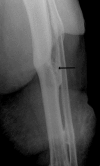
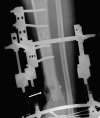

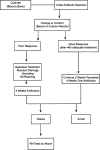



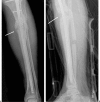
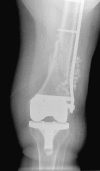
References
-
- Waldvogel F A, Medoff G, Swartz M N. Osteomyelitis—a review of clinical features, therapeutic considerations and unusual aspects. 3: osteomyelitis associated with vascular insufficiency. N Engl J Med. 1970;282:316–322. - PubMed
-
- Cierny G, III, Mader J T, Penninck J J. A clinical staging system for adult osteomyelitis. Clin Orthop Relat Res. 2003;414:7–24. - PubMed
-
- Lew D P, Waldvogel F A. Osteomyelitis. N Engl J Med. 1997;336:999–1007. - PubMed
-
- Song K M, Sloboda J F. Acute hematogenous osteomyelitis in children. J Am Acad Orthop Surg. 2001;9:166–175. - PubMed
-
- De Jonghe M, Glaesener G. Type B Haemophilus influenzae infections. Experience at the Pediatric Hospital of Luxembourg. Bull Soc Sci Med Grand Duche Luxemb. 1995;132:17–20. - PubMed

